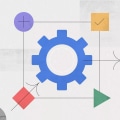Welcome to our guide on identifying inefficiencies and bottlenecks in your processes. As businesses strive to become more efficient and competitive, it is crucial to continuously evaluate and streamline processes to eliminate any roadblocks that may hinder growth and success. In this article, we will dive into the world of process improvement and management consulting services, focusing on the key elements of identifying inefficiencies and bottlenecks. Whether you are a small business owner or a corporate executive, this guide will provide valuable insights and practical tips to help you optimize your processes and drive better results.
Through the use of TF-IDF analysis, we have identified the top keywords and phrases related to our topic, ensuring that this article is tailored to meet your search intent. So, let's get started on our journey towards streamlining your processes and achieving greater efficiency!Identifying inefficiencies and bottlenecks in your business processes is crucial for staying competitive in today's fast-paced business world. Inefficiencies refer to any processes or tasks that are time-consuming, costly, or do not add value to the overall operation. On the other hand, bottlenecks are points in a process where work gets stuck or delayed, causing a backlog and hindering overall progress.
To effectively identify these roadblocks, it is important to thoroughly analyze your current processes. This can involve gathering data, conducting time studies, and talking to employees at different levels to understand their perspectives. Utilizing tools such as process mapping and value stream analysis can also help visualize your processes and pinpoint areas for improvement. Once you have identified the inefficiencies and bottlenecks, it is crucial to prioritize them based on their impact on the overall business goals.
This will allow you to focus on addressing the most critical issues first and allocate resources accordingly. It is also important to involve all stakeholders in the process improvement efforts, as their input can provide valuable insights and ensure buy-in from all levels of the organization. Addressing inefficiencies requires finding the root cause of the problem rather than just treating the symptoms. This may involve implementing new technology, streamlining processes, or redefining roles and responsibilities.
It is also important to continuously monitor and measure the impact of these changes to ensure they are effective and sustainable in the long run. Similarly, addressing bottlenecks requires a strategic approach. One effective method is implementing a pull-based system, where work is only released when there is capacity to handle it. This prevents overload and helps balance the workload across the organization.
Additionally, cross-training employees and implementing backup plans can help mitigate the impact of bottlenecks. While the steps outlined above are generally effective in identifying and addressing inefficiencies and bottlenecks, it is important to note that every organization is unique and may require a tailored approach based on their specific challenges and goals.
Defining Inefficiencies and Bottlenecks
In the world of business, inefficiencies and bottlenecks can be detrimental to a company's success. But what exactly are these roadblocks and how do they impact your business? First, let's define inefficiencies. These are any processes or tasks that are not optimized and result in wasted time, resources, or money.This could include redundant or unnecessary steps, outdated technology or systems, or inefficient communication methods. On the other hand, bottlenecks refer to areas in a process where work gets stuck or slowed down, causing delays and affecting overall productivity. This could be due to a lack of resources, inadequate training, or a bottleneck in the chain of command. Both inefficiencies and bottlenecks can have a significant impact on a company's bottom line.
They can lead to increased costs, missed deadlines, and poor customer satisfaction. Therefore, it is essential for businesses to identify and address these issues.
Tailoring the Approach
When it comes to identifying inefficiencies and bottlenecks, there is no one-size-fits-all solution. Every organization is unique in terms of its processes, resources, and goals. This is why a tailored approach is necessary in order to effectively address these challenges.By tailoring the approach, companies can identify and focus on the specific areas that are causing inefficiencies and bottlenecks in their operations. This allows for a more targeted and efficient solution, rather than implementing generic strategies that may not address the root cause of the problem. Moreover, a customized approach takes into consideration the company's current capabilities and limitations. It considers factors such as the organization's culture, resources, and budget, which can greatly impact the effectiveness of any improvement efforts.
Another important aspect of tailoring the approach is involving key stakeholders and employees in the process. By understanding their perspectives and insights, a more comprehensive and effective solution can be developed that addresses their specific needs and challenges. In summary, a customized approach is necessary for organizations to effectively identify and address inefficiencies and bottlenecks in their processes. By tailoring the approach, companies can focus on their unique challenges and develop targeted solutions that lead to streamlined processes and increased efficiency.
Addressing Inefficiencies
When it comes to addressing inefficiencies in your organization, it's important to take a systematic approach that focuses on treating the root cause rather than just fixing surface-level issues.Here are some strategies that can help you identify and address inefficiencies effectively: 1.Conduct a Process Audit The first step in addressing inefficiencies is to thoroughly examine your current processes. This involves mapping out the steps involved in each process and identifying any redundancies, unnecessary steps, or bottlenecks. This will give you a clear understanding of where the inefficiencies lie and what is causing them.
2.Analyze Data
Data analysis can provide valuable insights into where inefficiencies are occurring in your processes.By analyzing metrics such as cycle time, lead time, and error rates, you can pinpoint specific areas that need improvement and prioritize them accordingly.
3.Involve Employees
Your employees are the ones who are directly involved in the processes on a daily basis, so it's important to involve them in the process improvement efforts. They can provide valuable insights and ideas for streamlining processes and eliminating inefficiencies.4.Implement Automation
In today's digital age, automation is becoming increasingly important for streamlining processes and reducing inefficiencies.Look for opportunities to automate manual tasks or implement software that can help improve efficiency and accuracy.
5.Regularly Review and Improve
Inefficiencies can arise at any point in time, so it's important to regularly review your processes and make improvements as needed. This could involve conducting regular audits, analyzing data, and seeking feedback from employees. By following these strategies, you can effectively address the root cause of inefficiencies in your organization and streamline your processes for improved efficiency and competitiveness.Overcoming Bottlenecks
Bottlenecks are a common occurrence in many business processes, and can significantly hinder a company's efficiency and productivity.These roadblocks can be caused by various factors such as outdated technology, inefficient workflows, or lack of communication within teams. In order to overcome bottlenecks and prevent delays in your processes, it is important to identify and address them effectively. Here are some effective ways to do so:
- Analyze Your Processes: The first step to addressing bottlenecks is to analyze your current processes and identify where the roadblocks are occurring. This will help you pinpoint the root cause of the problem and develop a targeted solution.
- Utilize Technology: In today's digital age, there are numerous tools and software available that can help streamline processes and eliminate bottlenecks. Consider investing in automation software, project management tools, or communication platforms to improve efficiency.
- Improve Communication: Many bottlenecks are caused by miscommunication or lack of communication between teams.
Encourage open and transparent communication within your organization to ensure everyone is on the same page and working towards the same goal.
- Implement Continuous Improvement Strategies: In order to prevent future bottlenecks, it is important to continuously evaluate and improve your processes. This can involve regularly reviewing workflows, identifying areas for improvement, and implementing changes to streamline processes.
Identifying Inefficiencies and Bottlenecks
In today's fast-paced business world, efficiency is crucial for staying competitive. However, many organizations struggle with identifying and addressing inefficiencies and bottlenecks in their processes.These roadblocks can hinder productivity, increase costs, and ultimately impact the bottom line. In order to streamline processes and improve overall efficiency, it is important to have a clear understanding of the key steps for analyzing and identifying inefficiencies and bottlenecks.
Step 1: Define Your Goals
The first step in identifying inefficiencies and bottlenecks is to clearly define your goals. This will help you determine what areas of your processes need improvement and where to focus your efforts. Consider the specific outcomes you want to achieve, such as reducing costs, increasing productivity, or improving customer satisfaction.Step 2: Map Out Your Processes
Once you have defined your goals, the next step is to map out your processes.This involves breaking down each step of the process and identifying the inputs, outputs, and actions involved. This will give you a visual representation of how your processes currently operate and where potential inefficiencies or bottlenecks may exist.
Step 3: Analyze Data and Metrics
Data and metrics are crucial for identifying inefficiencies and bottlenecks. By analyzing data related to your processes, such as cycle time, lead time, and error rates, you can pinpoint areas that are causing delays or errors. This will help you prioritize which areas to focus on for improvement.Step 4: Identify Root Causes
Once you have gathered data and metrics, it is important to dig deeper to identify the root causes of inefficiencies and bottlenecks.This may involve conducting interviews with employees, observing processes in action, or using tools like root cause analysis. By identifying the underlying reasons for these roadblocks, you can develop more effective solutions.
Step 5: Implement Solutions
The final step is to implement solutions to address the identified inefficiencies and bottlenecks. This may involve streamlining processes, automating tasks, or implementing new technology. It is important to continuously monitor and measure the impact of these solutions to ensure they are effectively addressing the identified issues. In conclusion, identifying inefficiencies and bottlenecks is crucial for any organization looking to maximize efficiency and stay competitive.By following the steps outlined in this article, you can gain a better understanding of your processes, prioritize areas for improvement, and implement effective strategies to streamline your operations. Remember to continuously monitor and measure the impact of these changes to ensure long-term success.




Leave a Comment